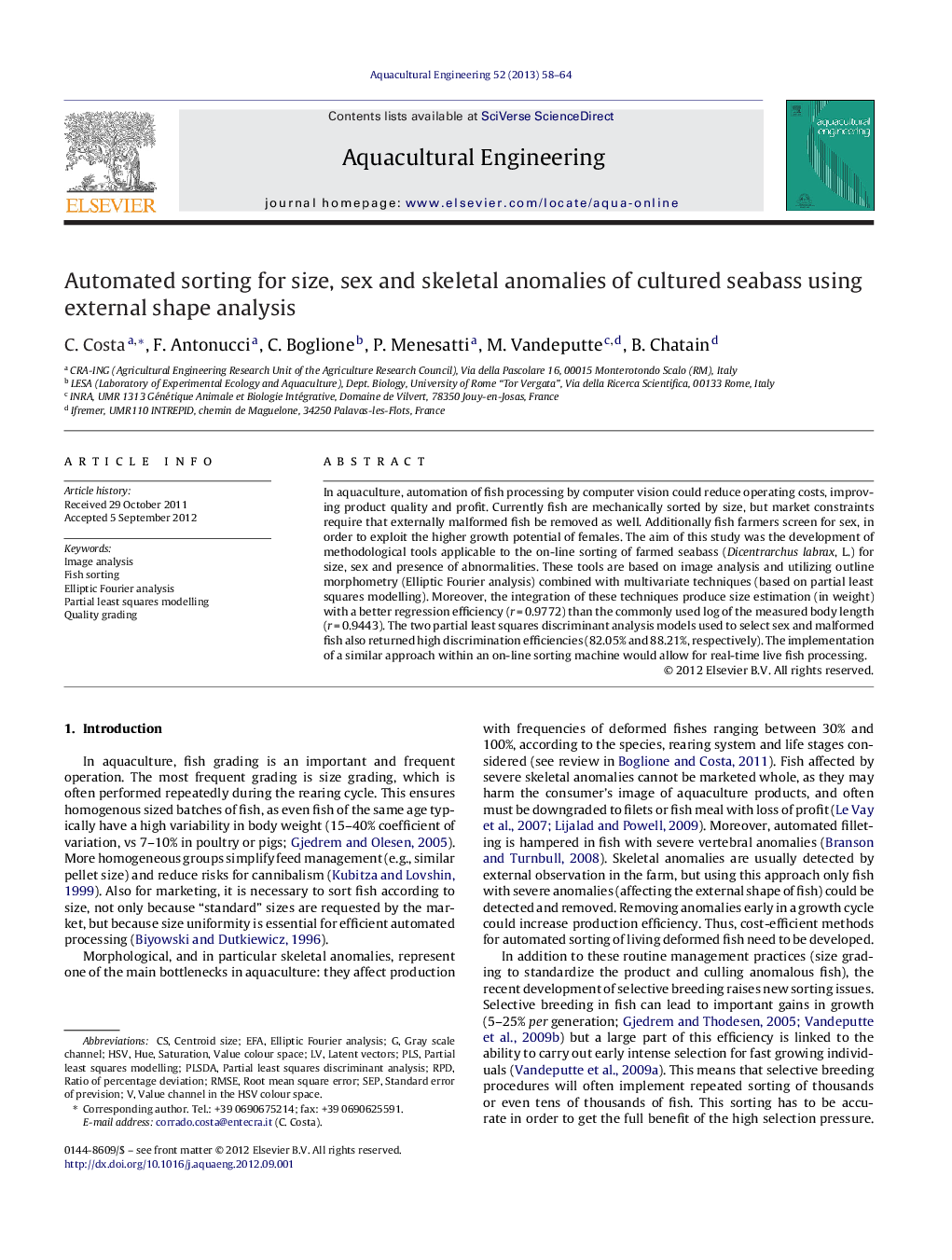| Article ID | Journal | Published Year | Pages | File Type |
|---|---|---|---|---|
| 6381420 | Aquacultural Engineering | 2013 | 7 Pages |
In aquaculture, automation of fish processing by computer vision could reduce operating costs, improving product quality and profit. Currently fish are mechanically sorted by size, but market constraints require that externally malformed fish be removed as well. Additionally fish farmers screen for sex, in order to exploit the higher growth potential of females. The aim of this study was the development of methodological tools applicable to the on-line sorting of farmed seabass (Dicentrarchus labrax, L.) for size, sex and presence of abnormalities. These tools are based on image analysis and utilizing outline morphometry (Elliptic Fourier analysis) combined with multivariate techniques (based on partial least squares modelling). Moreover, the integration of these techniques produce size estimation (in weight) with a better regression efficiency (r = 0.9772) than the commonly used log of the measured body length (r = 0.9443). The two partial least squares discriminant analysis models used to select sex and malformed fish also returned high discrimination efficiencies (82.05% and 88.21%, respectively). The implementation of a similar approach within an on-line sorting machine would allow for real-time live fish processing.
⺠Tools for on-line sorting of sea bass based on size, sex and abnormalities was developed. ⺠Tools are based on image analysis and utilizing outline morphometry. ⺠These analyses are combined with the multivariate techniques. ⺠For the size estimation the regression efficiency resulted equal to 0.9772. ⺠The discrimination efficiency for sex and malformation estimation was equal to 82.05% and 88.21% respectively.
